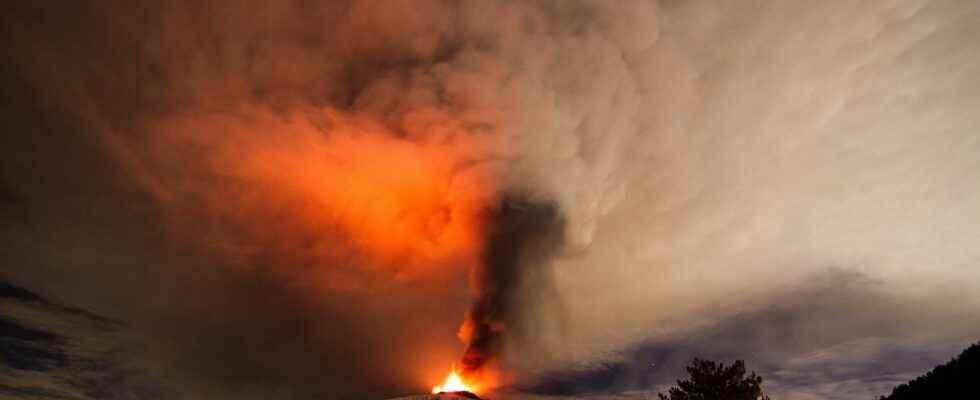You may also be interested
[EN VIDÉO] 8 things to know about volcanoes Objects of fascination and terror, volcanoes are among the most irreducibly indomitable forces of nature. From the mythological origin of their name to the eruptions that have marked history, here are 8 things to know about them.
Volcanic eruptions are frequent on Earth and represent one of the main manifestations of the intense geological activity of our Planet. Currently, more than 1,000 volcanoes are active on the globe, and they would be between 50 and 70 to erupt each year. The intensity, type or duration of each eruption is extremely variable and mainly depends on the tectonic context.
During its history, the Earth has thus experienced an incalculable number of volcanic eruptions, some of which were particularly significant. Super-eruptions are characterized by their violence, an extremely long activity of the volcanic system (on the order of several tens of millions of years) and by the enormous volume of magma involved. But the generation of this type of volcanism as well as the associated mechanisms are still poorly understood.
Magma on the surface but also in depth
If the super-eruptions are characterized on the surface by enormous volumes of volcanic deposits, they are also associated with the establishment of important plutos. Plutons result from the crystallization of magma at depthwithin the Earth’s crust. The plutonic rocks (or intrusive) are thus differentiated from volcanic rocks (or effusive) which crystallize on the surface. Plutonic and volcanic rocks can have the same mineralogical composition since they come from the same magma, but they differ in their appearance and especially the size of the crystals, which vary depending on the time the magma takes to cool. If the study of volcanic rocks makes it possible to understand the evolution of the magmatic system over time, the analysis of plutonic rocks makes it possible to better understand the formation of the Magma chamber and the overall dynamics of the system responsible for the eruption.
Because in depth, the formation of a pluton will depend on many parameters: fractional crystallizationdifferentiation of liquid magmatic, injection of new magma…
Based on the study of certain volcanic rocks in northern Chile associated with a series of four super-eruptions, a team of scientists was able to trace the initiation of this type of eruption in order to better understand the magmatic dynamics. associated.
A rapid eruption but a very long deep magma storage
Their results, published in Natureindeed show that if the installation of the plutons within the crust is staggered over several million years, testifying to a continuous supply of magma over very long periods of time, the final ascent of the magma towards the magma chambers shallow and the onset of an eruption occurs extremely quickly, in just a few decades.
The longevity of volcanic systems associated with plutons contrast so blatantly with the very short time needed to fill the magma chambers in the upper crust just before an eruption. The study indeed shows that certain crystals remain at temperatures of around 470°C (i.e. the temperature allowing the maintenance of liquid magma) for very long periods before being incorporated into the effusive magma. The magma would therefore be stored over the long term in a hot zone of the middle crust, before being expelled episodically and quickly to give rise to super-eruptions. Within this magmatic “incubator”, some minerals will begin to crystallize to form and grow plutons. The researchers think that the magma at the origin of the eruptions would come from an unstable pocket located at the top of this incubator. These data provide a better understanding of the generation of supereruptions and could help identify volcanoes likely to produce such eruptions.
However, super-eruptions remain rare. Even if they only occur every 20,000 years on average, they remain extremely destructive phenomena, capable of significantly influencing the climate and the environment.
Interested in what you just read?
